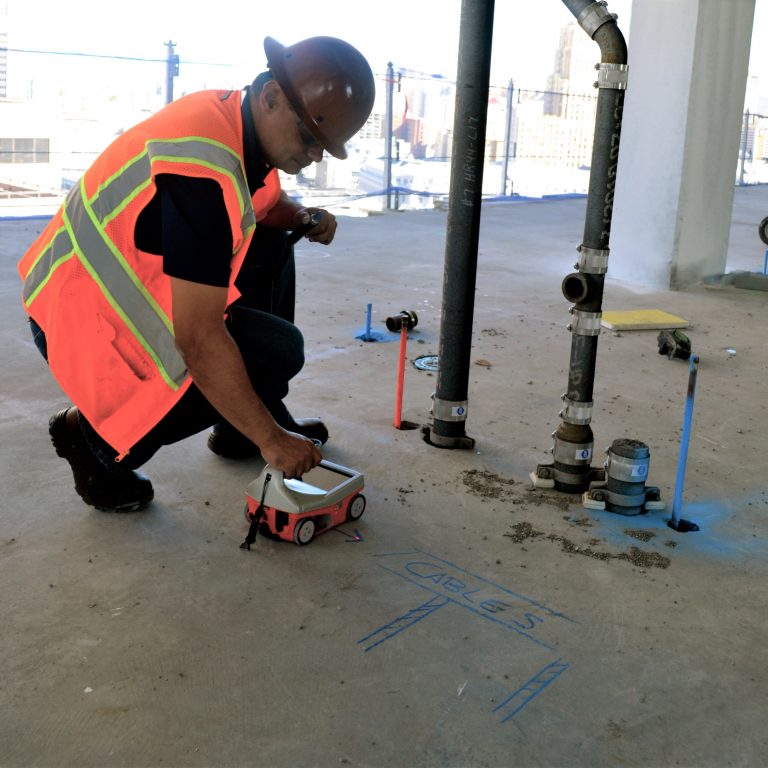RainierGPR Service Areas: Relied On Concrete Scanning Services in Numerous Locations
RainierGPR Service Areas: Relied On Concrete Scanning Services in Numerous Locations
Blog Article
Concrete Scanning: A Critical Action Towards Ensuring Architectural Integrity and Safety And Security
In the realm of construction and facilities maintenance, the importance of concrete scanning can not be overemphasized. This precise procedure holds the crucial to revealing potential dangers hidden underneath the surface area of relatively strong structures. By employing innovative modern technology and methods, concrete scanning acts as a crucial tool in making sure that the honesty and safety and security of bridges and buildings are upheld to the highest possible requirements. However, beyond its surface-level ramifications, the function of concrete scanning extends much much deeper than satisfies the eye.
Relevance of Concrete Scanning
Concrete scanning plays an essential function in making sure the architectural stability and security of buildings and infrastructure jobs. By utilizing innovative technologies such as ground-penetrating radar (GPR) and electro-magnetic induction, experts can non-destructively evaluate concrete structures to identify prospective defects, gaps, embedded items, and reinforcement format. This procedure allows early detection of abnormalities that can compromise the security of a structure, protecting against costly damages and ensuring the security of occupants.
Prior to drilling, cutting, or coring into concrete, scanning helps recognize the precise locations of rebar, post-tension cables, and various other embedded components, reducing the risk of unintentional hits that might lead to structural weak points. In addition, concrete scanning aids in top quality control by validating the density of concrete covers and detecting any type of inconsistencies that may affect the general durability of the structure.
Modern Technology for Concrete Examination

Advantages of Very Early Detection
Prompt detection of architectural issues can significantly minimize threats and make certain the durability of building jobs. By determining potential issues early on in the building and construction process, stakeholders can take aggressive steps to address concerns before they escalate right into bigger and more costly problems. One of the key benefits of very early discovery is the avoidance of architectural failings, which can present severe safety and security dangers and cause task hold-ups and economic losses.
Furthermore, very early detection permits prompt repairs and maintenance, which can aid expand the life-span of the framework. By addressing concerns immediately, building and construction teams can avoid costly fixings and even the demand for early replacement of architectural elements. This positive method not just conserves money and time however additionally enhances the general safety and longevity of the building and construction project.
Furthermore, very early discovery can improve task preparation and decision-making by supplying stakeholders with important insights into the problem of the structure. Armed with this info, task supervisors can make educated options pertaining to building products, techniques, and timelines, causing more successful and reliable task outcomes.
Making Certain Architectural Security
Ensuring the architectural stability of a building and construction task is vital to its safety and durability. Structural security refers to the capability of a building or facilities to maintain its type and function under environmental problems and numerous loads. To accomplish this, extensive analysis and surveillance of the structure are important. Concrete scanning plays a critical role in guaranteeing structural stability by finding prospective issues such as gaps, delamination, or support corrosion that can compromise the integrity of the structure with time.
By using sophisticated scanning innovations like ground-penetrating radar (GPR) and electromagnetic induction, building professionals can non-invasively evaluate concrete frameworks to determine locations of worry underneath the surface. This proactive approach enables the early discovery of weak points or defects, allowing punctual repairs or support to avoid structural failures.
Normal concrete scanning throughout various building stages and throughout the life process of a structure can aid maintain its stability, alleviate risks, and ensure the security of occupants. By focusing on structural stability with concrete scanning, construction tasks can boost their durability and toughness, ultimately adding to better safety and longevity.

Protecting Against Essential Failings
Executing routine inspections, find out here now such as concrete scanning, can expose hidden defects like spaces, splits, or deterioration that might endanger the honesty of a structure. By utilizing sophisticated scanning innovations like Ground Penetrating Radar (GPR) or Concrete X-ray, engineers can non-destructively assess the condition of concrete and determine weak factors that need reinforcement or repair.

Final Thought
In conclusion, concrete scanning plays a critical role in ensuring structural integrity and safety by using sophisticated innovation for early detection of potential click site concerns. This aggressive strategy helps protect against critical failings and makes sure the security of frameworks. It is necessary to focus on concrete examination as a common practice to safeguard the durability and security of buildings and facilities.
Concrete scanning plays an essential duty in making certain the architectural stability and safety of buildings and infrastructure projects. Furthermore, concrete scanning aids in high quality control by validating the density of concrete covers and detecting any kind of inconsistencies that might affect the general durability of the structure. Concrete scanning plays a critical function in guaranteeing structural stability by spotting potential issues such as gaps, delamination, or support rust that might endanger the stability of the structure over time.

In final thought, concrete scanning plays an important function in ensuring structural integrity and security by using innovative technology for early detection of possible concerns.
Report this page